Abstract
Macrophages and neutrophils that contain mainly secretory immunoglobulin A (IgA) comprise the majority of cells in human colostrum. These cell populations were separated and analyzed for their ability to release total IgA and secretory IgA when stimulated to phagocytose. Colostral macrophages phagocytosed opsonized bacteria and nonopsonized latex particles; at the same time, IgA was released. Neutrophils poorly phagocytosed opsonized bacteria but actively phagocytosed latex particles. In contrast to the macrophages, the neutrophils did not release IgA, even after active phagocytosis of latex. Consequently, colostral macrophages are the main source of IgA released from colostral leukocytes when these cells are exposed to organisms or particles that are phagocytosed. A function for colostral neutrophils which sequester IgA is proposed.
Full text
PDF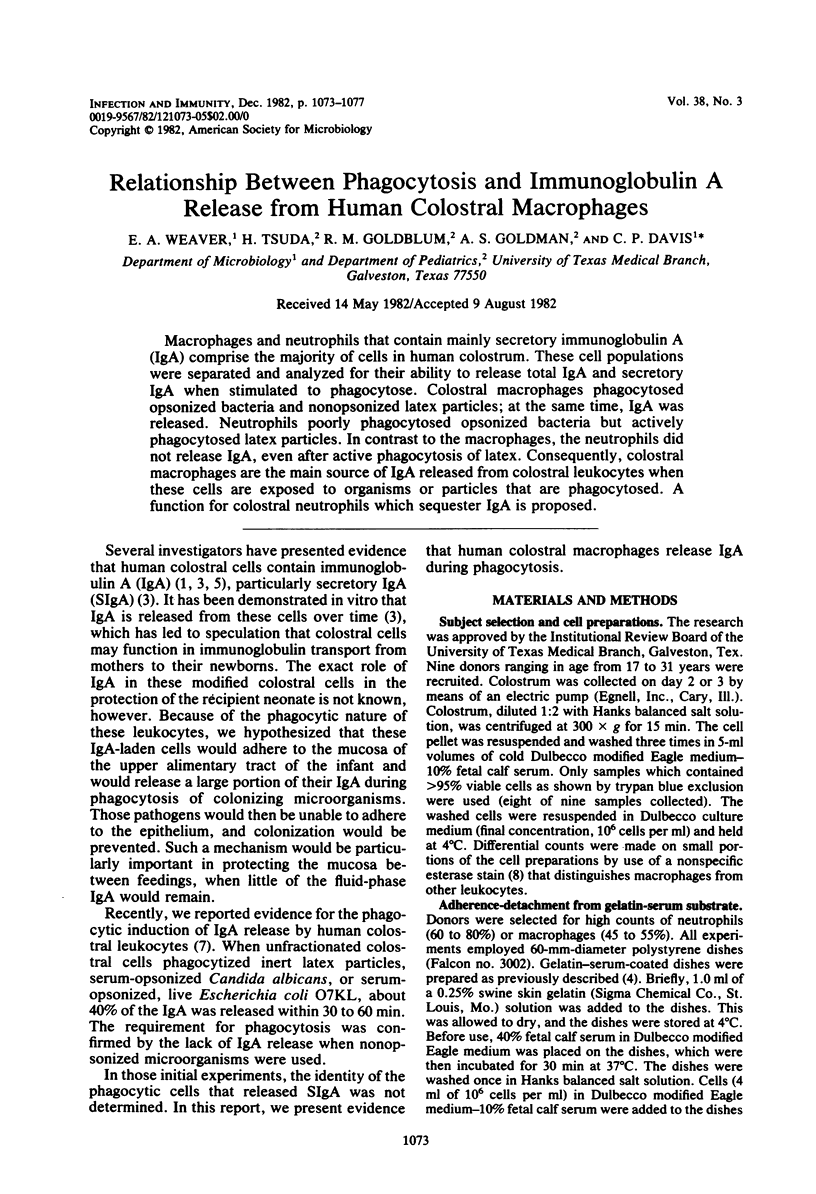
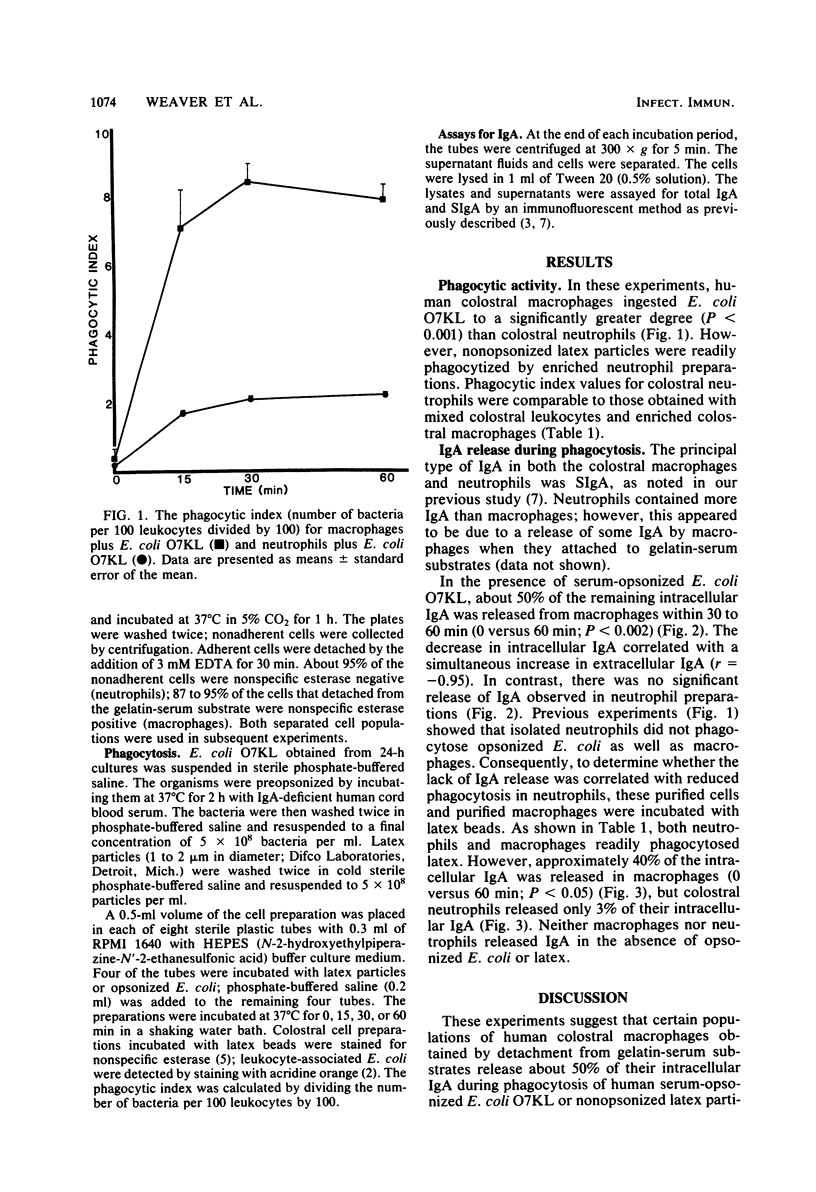
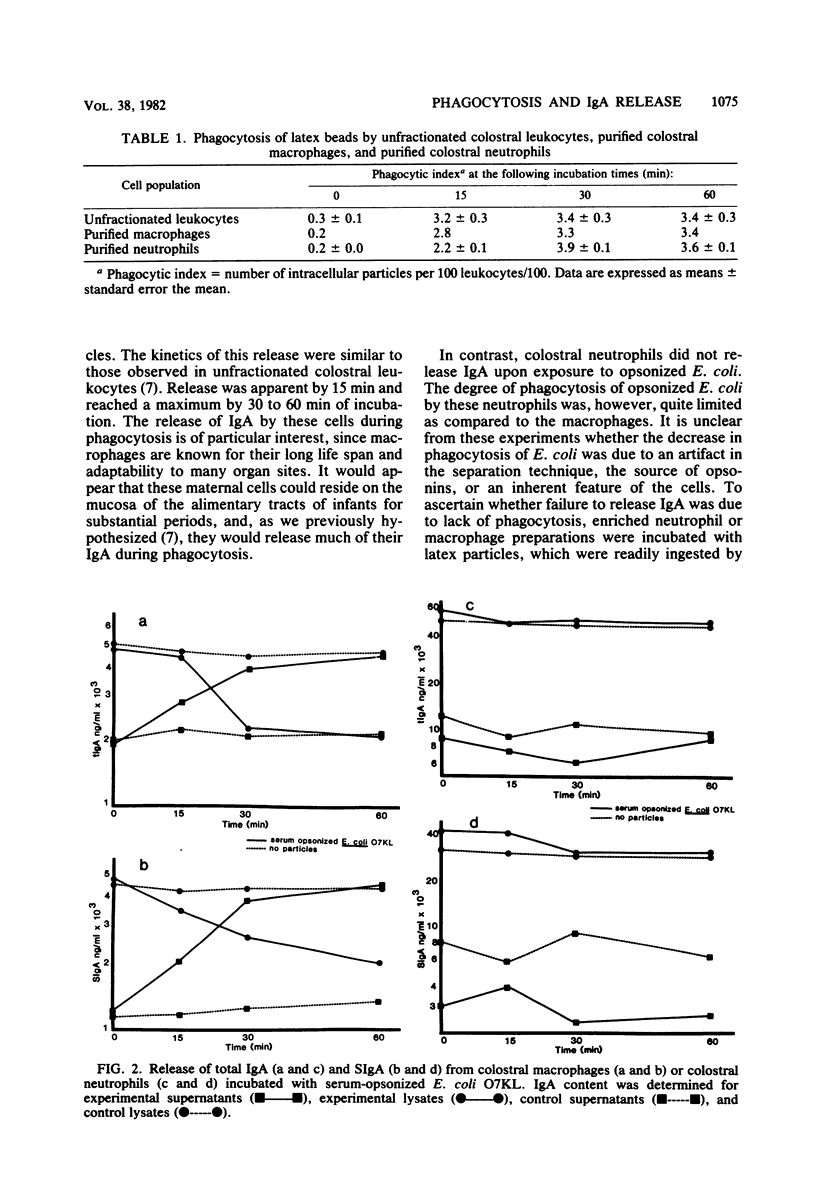
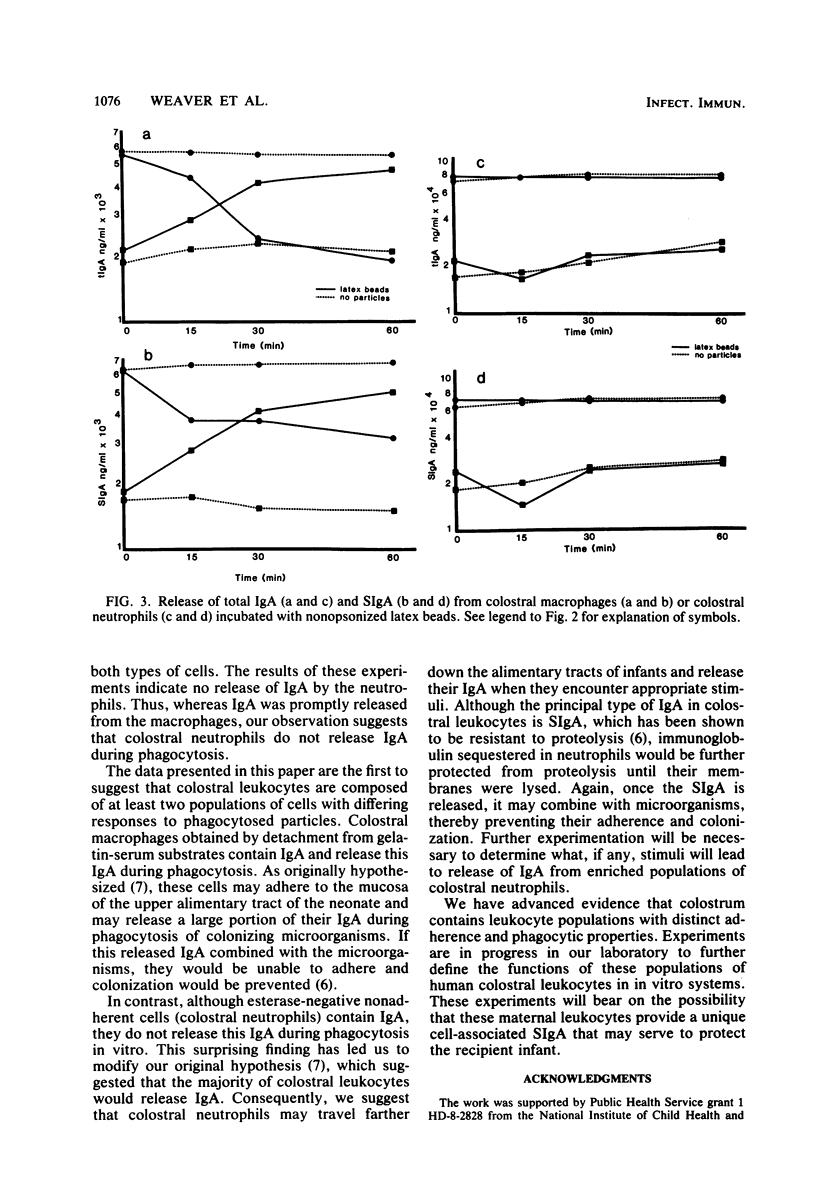
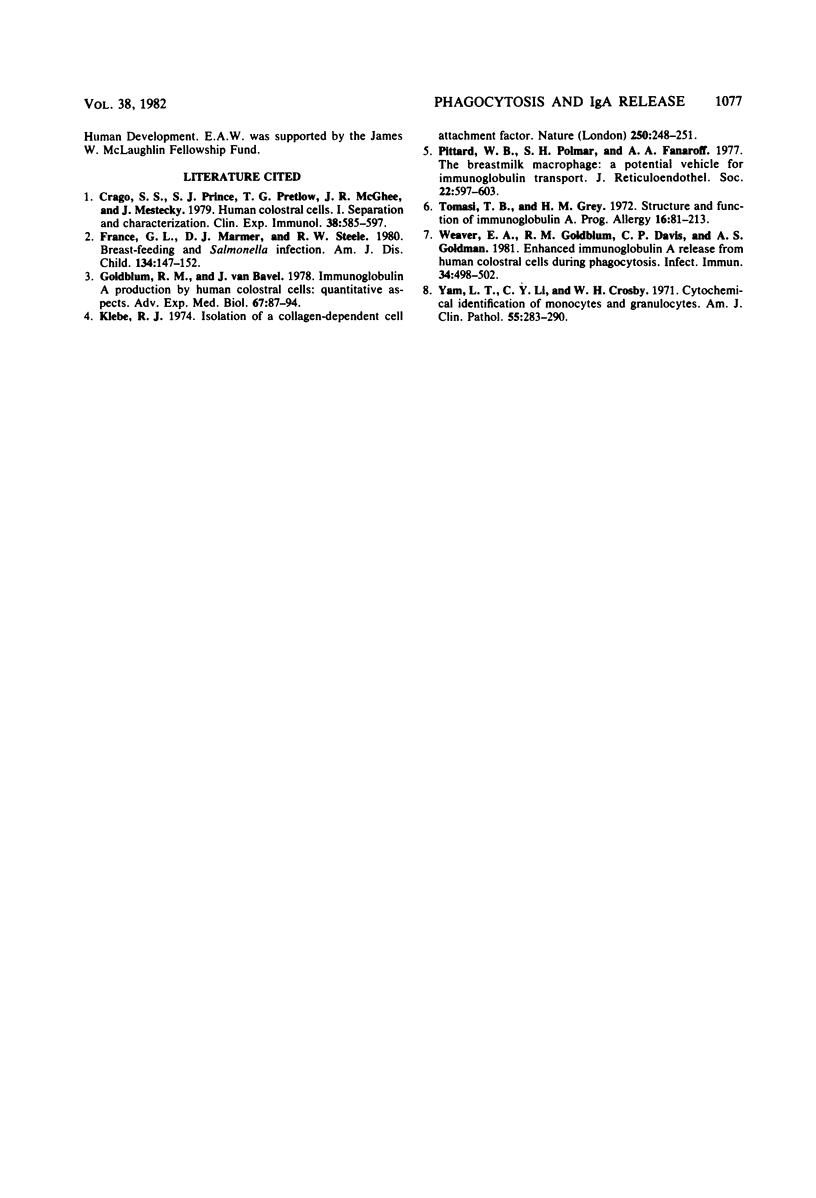
Selected References
These references are in PubMed. This may not be the complete list of references from this article.
- Crago S. S., Prince S. J., Pretlow T. G., McGhee J. R., Mestecky J. Human colostral cells. I. Separation and characterization. Clin Exp Immunol. 1979 Dec;38(3):585–597. [PMC free article] [PubMed] [Google Scholar]
- France G. L., Marmer D. J., Steele R. W. Breast-feeding and Salmonella infection. Am J Dis Child. 1980 Feb;134(2):147–152. doi: 10.1001/archpedi.1980.02130140021007. [DOI] [PubMed] [Google Scholar]
- Goldblum R. M., Van Bavel J. Immunoglobulin A production by human colostral cells: quantitative aspects. Adv Exp Med Biol. 1978;107:87–94. doi: 10.1007/978-1-4684-3369-2_11. [DOI] [PubMed] [Google Scholar]
- Klebe R. J. Isolation of a collagen-dependent cell attachment factor. Nature. 1974 Jul 19;250(463):248–251. doi: 10.1038/250248a0. [DOI] [PubMed] [Google Scholar]
- Pittard W. B., 3rd, Polmar S. H., Fanaroff A. A. The breastmilk macrophage: a potential vehicle for immunoglobulin transport. J Reticuloendothel Soc. 1977 Dec;22(6):597–603. [PubMed] [Google Scholar]
- Tomasi T. B., Grey H. M. Structure and function of immunoglobulin A. Prog Allergy. 1972;16:81–213. [PubMed] [Google Scholar]
- Weaver E. A., Goldblum R. M., Davis C. P., Goldman A. S. Enhanced immunoglobulin, A release from human colostral cells during phagocytosis. Infect Immun. 1981 Nov;34(2):498–502. doi: 10.1128/iai.34.2.498-502.1981. [DOI] [PMC free article] [PubMed] [Google Scholar]
- Yam L. T., Li C. Y., Crosby W. H. Cytochemical identification of monocytes and granulocytes. Am J Clin Pathol. 1971 Mar;55(3):283–290. doi: 10.1093/ajcp/55.3.283. [DOI] [PubMed] [Google Scholar]


